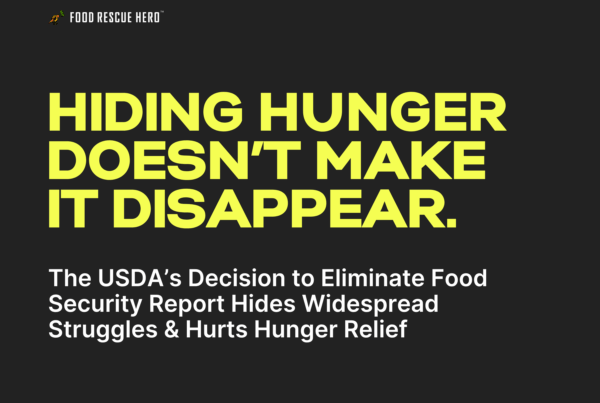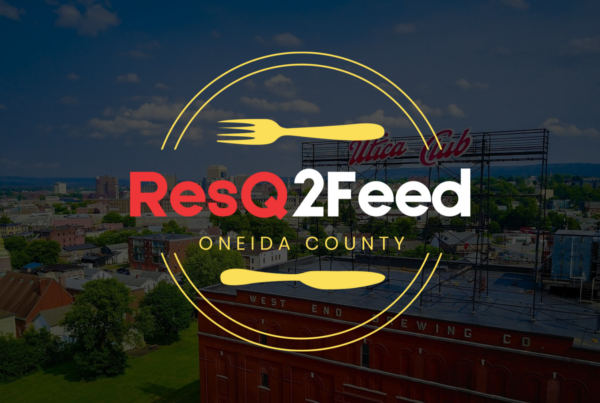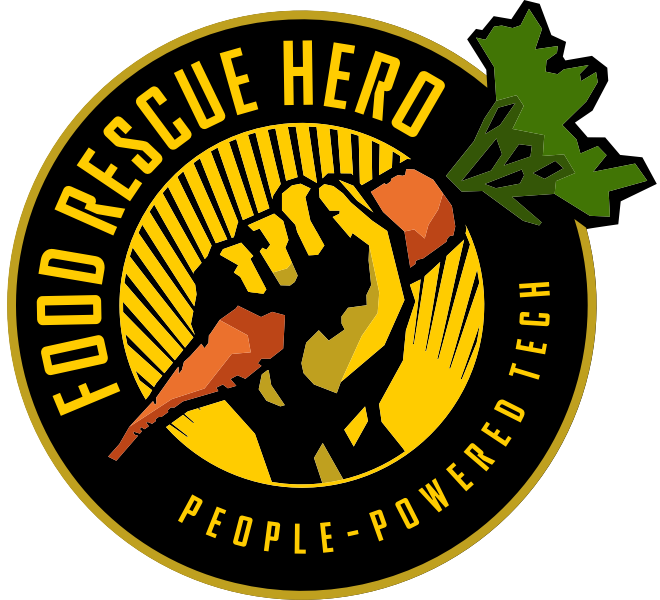
September is Hunger Action Month, and it’s important we talk about the shifting standards from food access to nutrition access, and from food access to food justice. From chronic and acute illness to lethargy and lack of mental focus, not having access to nutritious, culturally appropriate foods limit individual and community possibilities.
For many, September also marks the beginning of the school year.
At Food Rescue Hero, we recognize that schools can be vital sources of nutrition access in their communities, which is why we have considered factors like school bus routes and access to school facilities in our distribution strategies. It’s also why we are adamant supporters of school lunches.
School lunches play a pivotal role in the lives of young children, especially those from low-income families. For millions of kids, the meal they get at school might be the most nutritious, or even the only full meal they have in a day.
The lunch children receive at school is far more than just a break in their day; it’s a cornerstone of their health, development, and future well-being.
The Foundation of Health and Growth
Nutrition is the bedrock of physical and cognitive development in children. A well-balanced diet is essential for their bodies and minds to function optimally. Yet food insecurity remains a harsh reality for many families. According to Feeding America, in 2021, over 9 million children lived in food-insecure households in the U.S.
School lunches provide a vital safety net. These meals are carefully designed to meet nutritional guidelines, ensuring that children receive the essential nutrients they need. Each component of a school lunch contributes to a child’s growth and vitality.
Imagine a child sitting in class, stomach growling, unable to focus on the lesson because they haven’t had enough to eat. Hunger is a formidable barrier to learning. Studies have consistently shown that well-nourished children are more attentive, perform better academically, and exhibit fewer behavioral problems in school.
Creating Equal Opportunities
Beyond physical nourishment, school lunches serve as powerful equalizers. They provide every child, regardless of their socio-economic background, with the same opportunity to eat a healthy meal. This helps to level the playing field, giving all students a fair chance to succeed.
For low-income families, school lunches can significantly relieve financial pressures and provide peace of mind. Parents know that their children are guaranteed a nutritious meal each school day.
Moreover, for children from diverse cultural backgrounds, inclusive school meal programs that offer culturally appropriate options foster a sense of belonging and respect for their heritage. It’s a small but meaningful way to affirm their identity and show that their culture is valued.
Building Healthy Habits
The impact of school lunches extends beyond the classroom by instilling lifelong healthy habits. Through exposure to a variety of foods and balanced meals, children can learn about the importance of nutrition and develop a taste for healthy options.
Many schools incorporate gardens, cooking classes, and nutrition education into their curriculum. These programs empower children with the knowledge and skills to make healthy food choices. They learn not just what to eat, but also why it matters.
Strengthening Communities
School lunch programs ultimately have the power to strengthen communities.
By sourcing food locally, schools can support local farmers and reduce their own environmental footprint. Community involvement in these programs – whether through volunteering, donations, or advocacy – fosters a sense of collective responsibility and pride.
During the COVID-19 pandemic, school lunch programs were lifelines for many families, and even now some districts continue to provide grab-and-go meals, ensuring that children receive nutritious food even when classrooms are closed.
The Call to Action
Providing every child with access to a nutritious lunch is not just a matter of policy – it’s a moral imperative. We must advocate for robust funding and support for school meal programs, ensuring they can continue to provide healthy, appealing, and culturally appropriate meals to all children.
Investing in school lunches is investing in our future. It’s a commitment to the well-being and potential of every child and a commitment to our collective future. It’s about recognizing that no child should have to learn on an empty stomach and that the path to a brighter, more equitable future starts with a simple, nourishing meal.
References
- Feeding America. (2021). Child Hunger in America. Retrieved from Feeding America.
- USDA Food and Nutrition Service. (2021). School Meal Programs: National School Lunch Program (NSLP) and School Breakfast Program (SBP). Retrieved from USDA FNS.
- Centers for Disease Control and Prevention. (2020). Health and Academic Achievement. Retrieved from CDC.
- American Academy of Pediatrics. (2016). The Link Between Nutrition and Cognitive Function in Children. Retrieved from AAP.
- Economic Policy Institute. (2019). School Meals Programs and Their Impact on Food Insecurity. Retrieved from EPI.
- Food Research & Action Center. (2020). Culturally Appropriate Meals in Schools.






